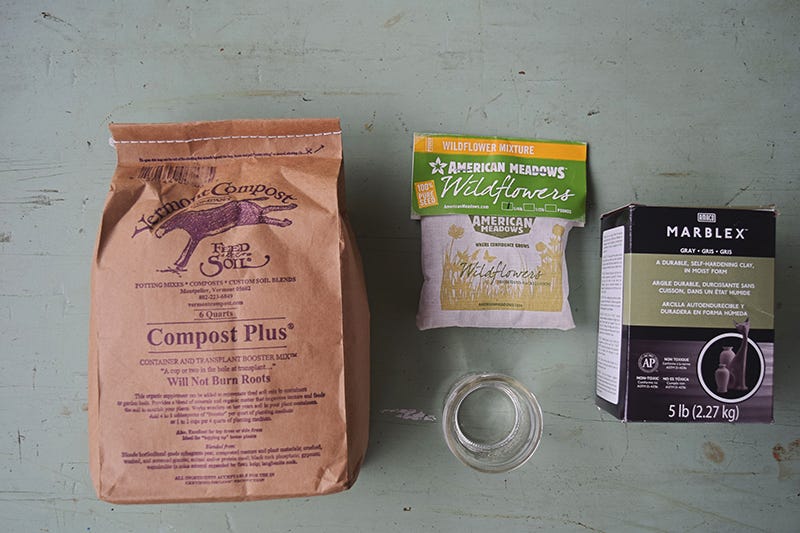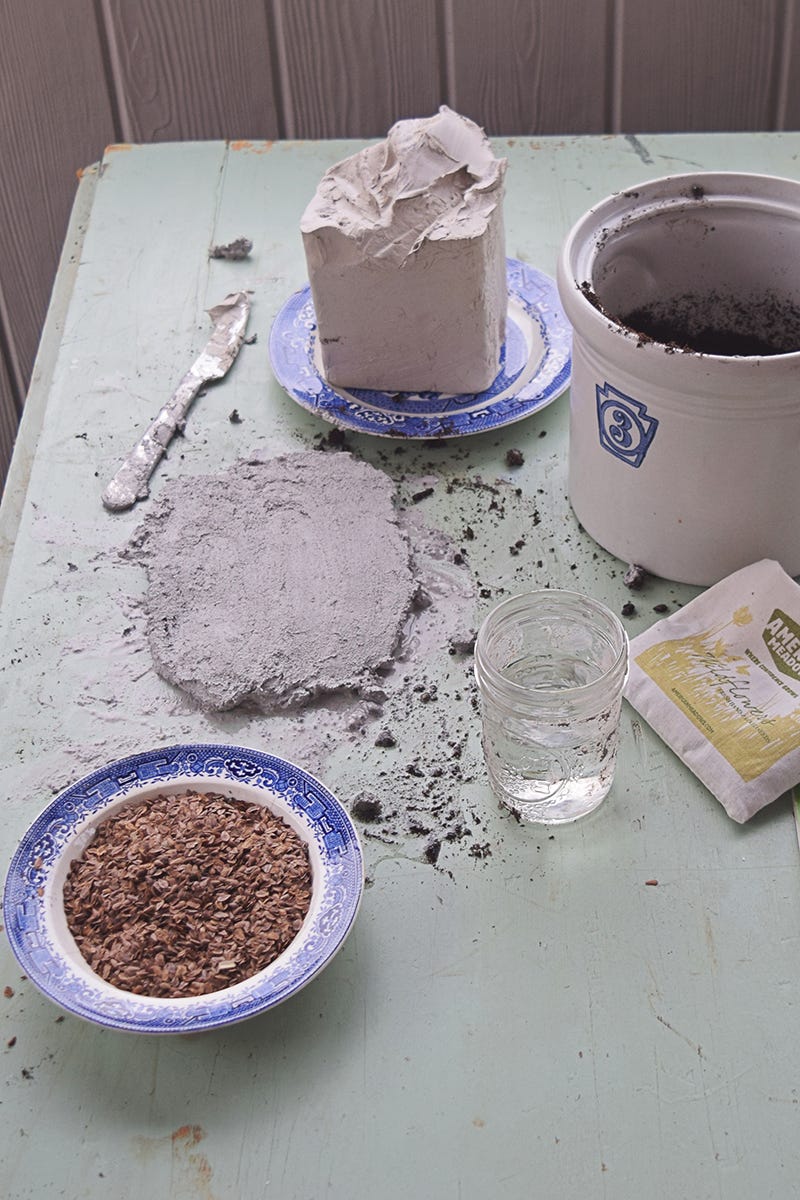Making Seed Bombs With Milkweed
by Amanda

Finished seed bombs, ready to plant!
Seed bombs are extremely easy to make and are a great way to casually plant seed in the fall or early spring (depending on the variety). I chose to make seed bombs with milkweed seed because this low-maintenance perennial is a must-have for any pollinator garden and is easily seeded in the fall.
Seed bombs are a perfect project to get your kids involved in gardening and make for a great winter activity to get ready for spring seeding. They are also fabulous party or wedding favors.
Follow these simple instructions for making seed bombs with milkweed and easily substitute any wildflower seed that catch your eye.
1. Get Your Ingredients Together
One of the key steps to making seed bombs is making sure you have the right ingredients. They are easily found in your local garden center and craft store.

Seed Bomb Ingredients:
- A non-toxic clay. It can be powdered or prepared clay. I chose a clay without any added dyes that was all natural.
- Organic compost. Try to get the best compost available – this helps the seeds sprout and grow larger plants.
- Water.
- Seed (of course!) I used milkweed seed but you can use any wildflower seed.

I put all the ingredients in bowls so it was easy to access them while making the seed bombs.
2. Mix The Compost, Clay and Water
I thought this was the most fun part of making seed bombs. It was therapeutic to get my hands dirty in the off-season!

Start with equal parts compost and clay. The more compost, the better!
Pro tip: Feel free to use garden gloves, as this does get a little messy. I don’t mind getting my hands dirty but wish I had taken my ring off!

Start with one part compost to one part clay and mix it together with your hands. Add water gradually to get a soft texture that is easily molded. Once I had the right consistency, I kept adding more compost, clay and water until I had enough for about 12 seed bombs.

3. Roll The Mixture Out Flat And Cut
Once you have enough clay/compost mixture, roll it flat on the table and use a sharp tool (I used a butter knife) and cut in even sections. This makes it easier to make semi-consistent sized seed bombs, although in the end mine weren’t all the same size.



4. Roll Into Balls
Use your hands to roll each section out into a round ball. This step definitely reminded me of making cookies. Each ball should be roughly the size of a quarter.

5. Add Seeds!
I used a toothpick to poke holes in each seed ball and fill with milkweed seeds. Milkweed seeds are medium sized so I could press them further into the center of the ball. If you’re using smaller seeds (like poppies) make sure to keep them towards the surface of the ball so they have the best chance of germinating. If you’re using larger seeds (like sunflowers) they can be buried deep in the center of the seed ball.

I added about 6-7 milkweed seeds per ball. Make sure not to put too many seeds in each seed ball as they could get overcrowded once planting.

6. Roll Into Balls Again
Once you’ve added the seeds, use your hands to roll the bombs into round balls again, making sure to press the seeds in.
7. Dry
This is easiest part: let your seed bombs dry for a few hours until hard.

Waiting for the seed bombs to dry.
8. Plant (Or Store For Next Season)
If you’re making your seed bombs in the off-season, simply store the seed bombs in an airtight container in a cool, dry place until it’s time to plant. A mason jar in the back of a closet works great!
How To Plant Seed Bombs:
When: Plant in the fall once there have been a few frosts and there is no chance the seeds will germinate before spring. If you’re making milkweed bombs like I did, fall is the only time to plant. If you’re making seed bombs with other wildflowers, sow in the fall or in the early spring once there is no more chance of frost.
How: Simply throw the ball onto bare soil in the garden or like a true rogue gardener, toss balls in random spots throughout your property. With a little water and plenty of sunlight (with the help of the compost), your seed bombs will germinate and grow easily.

My milkweed seed bombs will eventually become a haven for monarchs!
I had a lot of fun making seed bombs and the entire process – once I had the ingredients – took less than an hour. Have you made seed bombs for your garden? Please share your experience in the comments below!